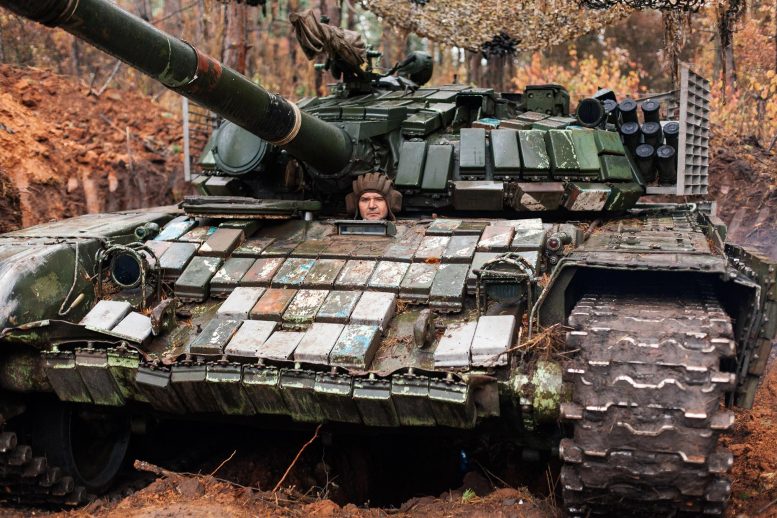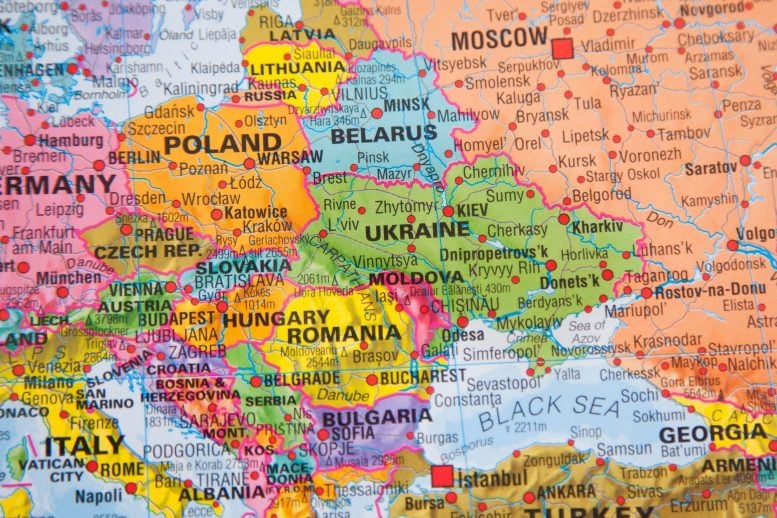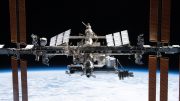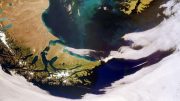Ukraine and Russia are two countries that border each other in Eastern Europe. On February 24, 2022, Russia sent its army into Ukraine and began trying to take over the country by force.
This invasion surprised many people, as it was the first major war in Europe for decades. But Russia and Ukraine have had a difficult relationship for centuries. To understand what’s happening now you have to dig into 1,300 years of history.
Both countries trace their beginnings to the same medieval kingdom, called Kyivan Rus. It was founded in the 800s by a group of Vikings, the Varangians, who came from Northern Europe to rule over the local people. Kyivan Rus spanned what is now Russia and Ukraine, and its people, the Slavs, are the ancestors of today’s Russians and Ukrainians. Its capital was the city of Kyiv – the same Kyiv that is now the capital of Ukraine. Moscow, the capital of today’s Russia, was also part of Kyivan Rus.
Where is Ukraine?
Kyivan Rus was conquered by Mongol armies from Asia in 1240 and split up. Kyiv became part of a new commonwealth that spanned today’s Poland and Ukraine. Moscow became a local capital of the Mongol Empire. Both Moscow and Kyiv were at the crossroads between Europe and Asia, but with different cultures based on their geography.
Imperial Russia and the Soviet Union
In the 1500s, descendants of the Kyivan Rus’ princes in Moscow formed an empire of their own, imperial Russia. By 1654, it included Kyiv and its Ukrainian peoples along with other lands and people from Europe and Asia.
In imperial Russia, some saw Ukrainians as brothers to the Russians because they shared a culture dating back to medieval times. But Ukrainians said that while both groups practiced the same religion and shared some history, Ukrainian culture – such as its food, language, art, and music – was different. It was shaped by contact with different peoples and a history different from Russia’s.
A revolution in February 1917 forced Russia’s leader, Czar Nicholas II, from the throne. Another revolution that same year created a new empire called the Soviet Union.
Some Ukrainians didn’t want to join the new Soviet empire. They tried to form their own country. But the Soviets defeated their movement and created the Ukrainian Soviet Socialist Republic instead – one of a number of republics that made up the union. At first, it allowed Ukrainians to keep their culture and run their local government. But when the Soviets began to fear that Ukrainians wanted independence, they took their power away.
A free Ukraine
In 1991, the Soviet Union collapsed. Ukraine and Russia, which both had been part of the Soviet Union, became independent countries.
Fast forward to 2013. Ukraine’s president, Viktor Yanukovych, wanted Ukraine to be loyal to Russia. So he decided not to sign a trade agreement to bring Ukraine closer to Europe. Ukrainians protested, kicked Yanukovych out of office, and elected a government that favored Europe rather than Russia.
Russian President Vladimir Putin claimed that despite these protests, most Ukrainians wanted ties with Russia. He also worried that Ukraine would join a military alliance with the U.S. and Europe that would be a threat to Russia.
In 2014, Russia took over an area in southern Ukraine called Crimea. It also sent soldiers and weapons to eastern Ukraine, claiming to be helping people who wanted to be part of Russia. In the eight years since then, about 14,000 people have died, and 1 million people have fled to escape the fighting.
The current war
In February 2022, Putin again claimed that Ukrainians and Russians are one people. He sees Ukrainians and Russians as brother nations and says that because Russia is the older brother, it should get to be in charge.
Most Ukrainians disagree. They have been inspired by the words of their president, Volodymyr Zelenskyy. He told Putin that Ukrainians want peace, but that if they need to, they will defend their country’s independence.
Putin invaded, and this time his plan is to take over the entire country. Ukrainians are now fighting the Russian army, trying to defeat what they say is an occupation.
In Russia, the people had no say about whether to invade. Many are protesting against it. Many families have both Russian and Ukrainians members. Because of this, a lot of people on both sides of the border do not want to fight a war against each other.
The United States and much of Europe are on the side of Ukrainians. They believe Ukraine should be able to decide its own future.
Written by Kathryn David, Mellon Assistant Professor of Russian and East European Studies, Vanderbilt University.
This article was first published in The Conversation.![]()











The writer of this article presents the historical relationship between Russia and Ukraine very well, and is very insightful.
My comment is Putin indiscriminate bombing of Mariupol, Mykolaiv and other Ukranian cities indicates that his concern is more about the location of the land for future military purposes, than Russia’s historical/biological relation to the people that live in the land. His ‘scorched earth’ policy shows his disregard towards the Ukranian people. In one of the Russian-Ukraine peace talks in early March 2022, a major TV station indicated removal of Ukranians from Ukraine, to other parts of Russia, was a Russian condition of peace.
Again the physical location of the land seems to be of more importance to Putin, than Russia-Ukraine historical/biological relationships. Putin’s quick movement to Ukraine’s nuclear power plants, may indicate he feared Ukraine was harboring nuclear weapon grade uranium ore. His hesitancy on bombing Odessa may be because it houses a known Ukraine biological laboratory. From the NCBI website,
“This is one of the laboratories of the SI (State Institution) “Ukrainian I. I. Mechnikov Anti-Plague Research Institute” of the Ministry of Health of Ukraine (Odessa), which is responsible for the identification of especially dangerous biological pathogens. This laboratory was reconstructed and technically updated up to the BSL-3 level through a cooperative agreement between the United States Department of Defense and the Ministry of Health of Ukraine that started in 2005. The collaboration focuses on preventing the spread of technologies, pathogens, and knowledge that can be used in the development of biological weapons. The updated laboratory serves as Interim Central Reference Laboratory with a depozitarium (pathogen collection).” https://www.ncbi.nlm.nih.gov/books/NBK196149/#_appe7_
Its all about the land for Putin, location, location, location. And a land poisoned by dangerous escaped pathogens, or a nuclear power station contamination event, has no value to Putin, other than serving as a barrier to NATO countries. Also the article, “EXCLUSIVE WHO says it advised Ukraine to destroy pathogens in health labs to prevent disease spread”, by By Jennifer Rigby and Jonathan Landay, Reuters. https://www.reuters.com/world/europe/exclusive-who-says-it-advised-ukraine-destroy-pathogens-health-labs-prevent-2022-03-11/
That simple ABC of Russo-Ukrainian history failed to mention that the Polish-Lithuanian Empire of the 1560s extended east to very close to Smolensk in Belarus and that in the 1850s Britain and France invaded the Russian Crimea to lay siege to Sevastopol, to die of cholera and typhoid and for the British Light Brigade (Onward, the 600!) to charge headlong down the Balaclava Valley into Russian cannon fire, which didn’t do anyone much good but forged yet another page of ‘glorious’ military history for someone, somewhere.
Unless this is some sort of study of propaganda techniques this article should never have been published here; but, no doubt, but that the editors were forced to submit to political pressure, and, no doubt, will continue to be pressured in the future.